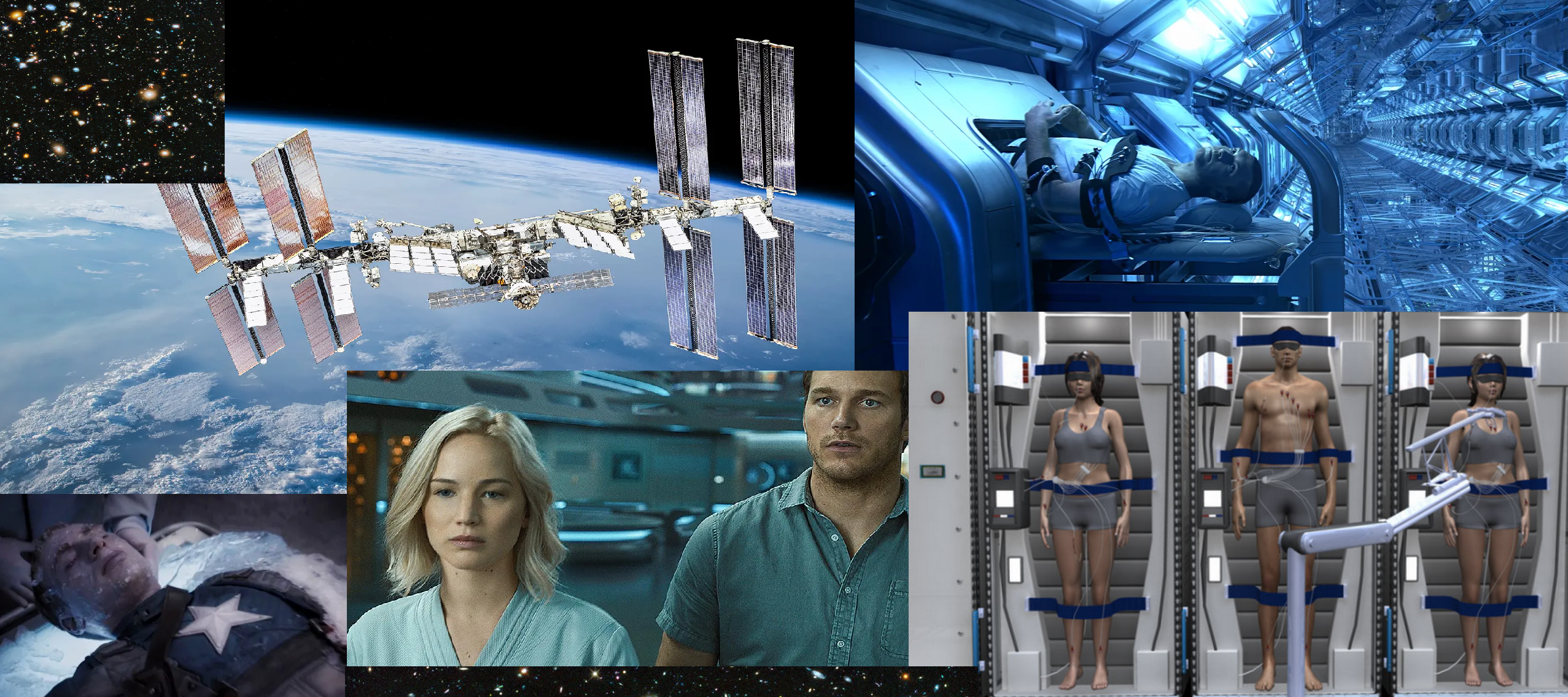Cryo sleep
Posted on August 13, 2022 • 4 minutes • 823 words
Hello dear readers. Your curious explorer is back to take you all on an exploration far into the universe. Let’s go and explore the galaxies that are billions of light years away. But wait, can we really do that? Recently, the farthest galaxy captured by the James Webb telescope is 13.5 billion light years away. And for a rocket with the current highest capacity, it would theoretically take us 20 billion years to reach there. This means a human has to extend his life span 200 thousand times to take that journey. Indeed, an impossible journey.
I’m sorry. This exploration is not possible. Even if I somehow made eternal life possible, don’t you think eternity is a curse and not a blessing? We need to look at this differently. Extending life is not the answer. But what if we can pause your life and play it again after some time? Transcend you through time and deliver you into the future. Sounds like a Captain America story? This blog post exactly talks about that.
Science fiction movies like Passengers have the very same concept. You just have to sleep in a pod and freeze your life. After travelling some distance through space, you can continue your life. Sounds awesome right? I’m here to peel the banana and tell you how this is done. Currently, two approaches are taken for this. One approach is to pause the video and play it later. The other approach is to shift the media to slow motion and get it back to the normal speed. These are called cryonics and the torpor approach.
The cryonics approach takes advantage of freezing cellular processes. This is a popular approach in seed banks or storage of animal germplasm. The seeds are frozen at sub-zero degrees and when required, they are thawed to room temperatures and the seed comes back to life to give a plant. Now, why not do it in humans? Thawing back is the challenging part. The ice crystals might destroy a few cells and not all cells might be able to come back to life. Captain America could survive such cold temperatures due to his quick regenerative capacity and his blood being a cryoprotectant. Plants can handle such damages and regenerate back. However, in humans, every cell plays a highly differentiated function. Now the current research looks into different ways of reducing the damage and finding out highly important regions that require special care while freezing.
The other approach to this problem is to reduce the metabolism of the body and this is called torpor. We know about hibernating animals like bears that reduce their metabolism and survive through cold winters. Why not replicate similar conditions in Man? When you reduce the temperature and pump in metabolic inhibitors, the body enters into a slow-motion state and you start ageing slowly. This, although might not be the same as complete freezing, it still achieves the same goal as cryonics.
Cryonics has a long way to reach the goal of freezing and reviving the human body. Cryonics is regularly used in organ donation and about half of the donated organs are currently tossed out as they don’t thaw out functionally. The record amount of tissues to be thawed out completely retaining their functionality is just 50 ml. And the blood poses a greater problem. The blood must be replaced with antifreeze and must be replaced back with fresh blood while reviving back. There is a lot for us to learn how this works, but conducting such studies would cause ethical concerns. We do not know for sure if we are freezing and resurrecting a body or if are we just killing it.
The safer alternative approach is to put the body into torpor. The European Space Agency has been successfully able to shut off some parts of the brain that in turn reduced the metabolism of the entire body of rats. NASA, in partnership with SpaceWorks Enterprises, was able to put humans in a state of torpor for more than 2 weeks. But we are not sure if this means that we are only cutting down the food costs of astronauts or actually sending them through time. Due to ethical concerns about performing such experiments and the secretive nature of aeronautics, we do not know the progress of such experiments. But scientists think that torpor only slightly reduces the ageing process.
We never know what the future holds. Edison would not have thought of tube light or Graham bell could never have imagined a video call. Currently, cryo sleep might look impossible but you never know if we would enter a time where people could just die for some centuries and return back to life when they want to. An era where humans become multi-planet species and explore the corners of the universe. Or… an era where humans stop innovating, sleep and wait for the planet to become a better place?
